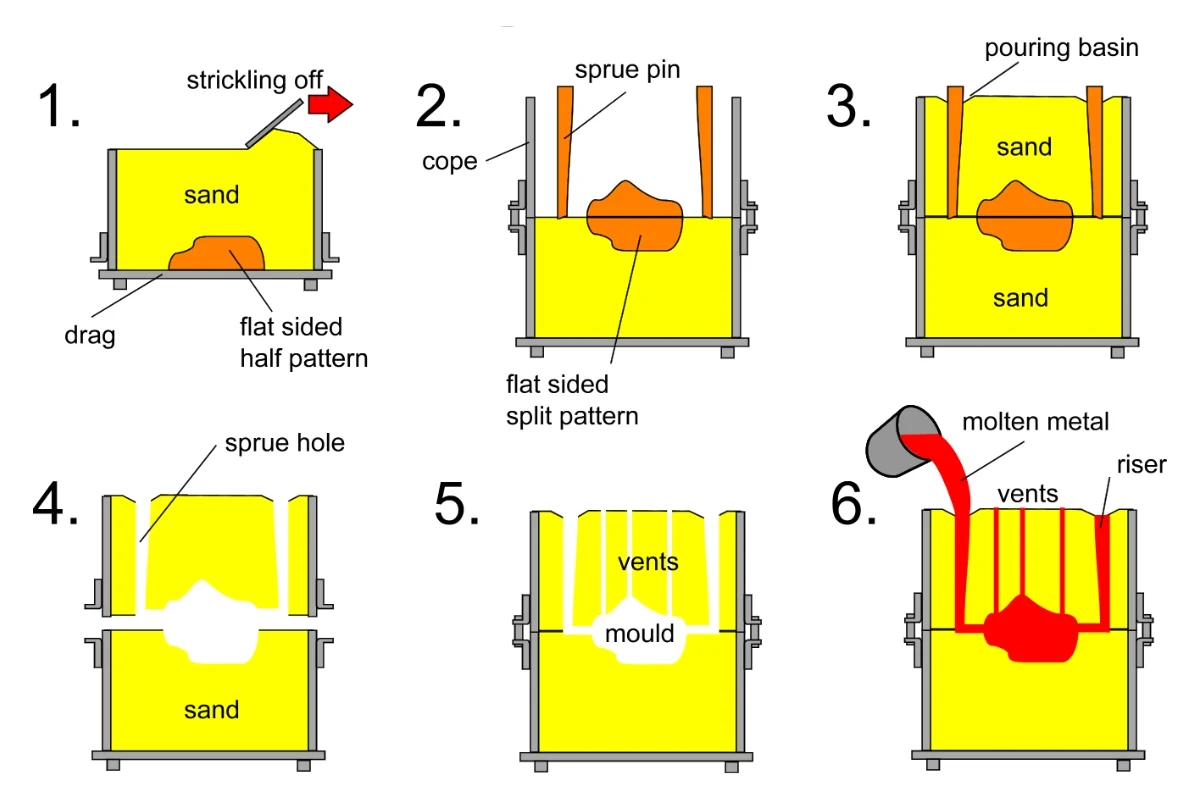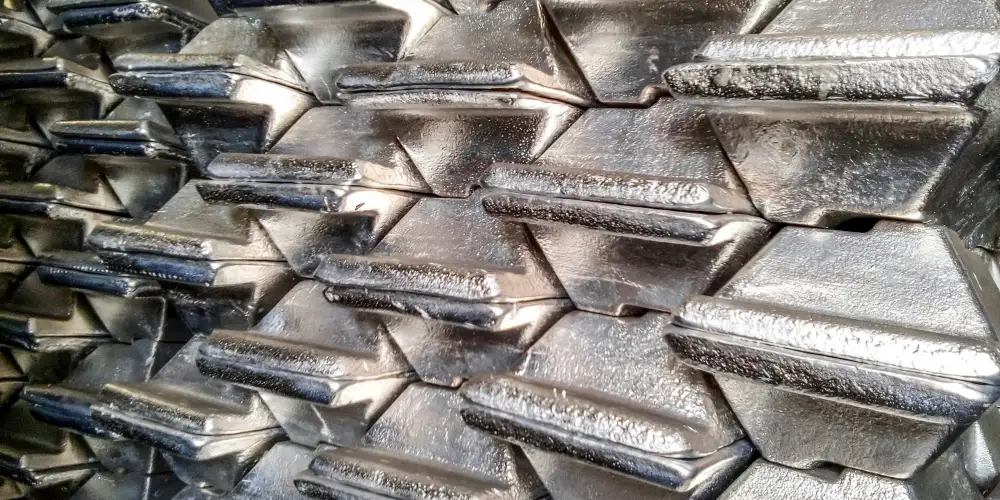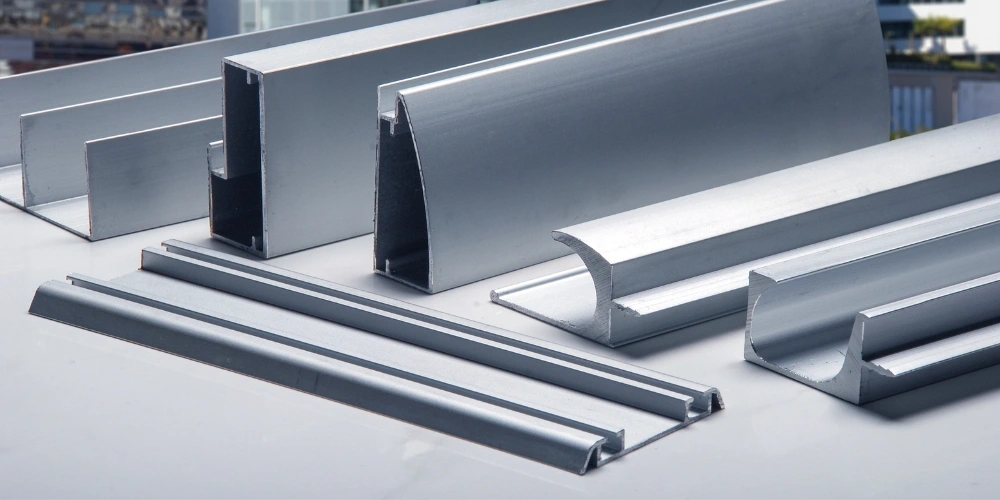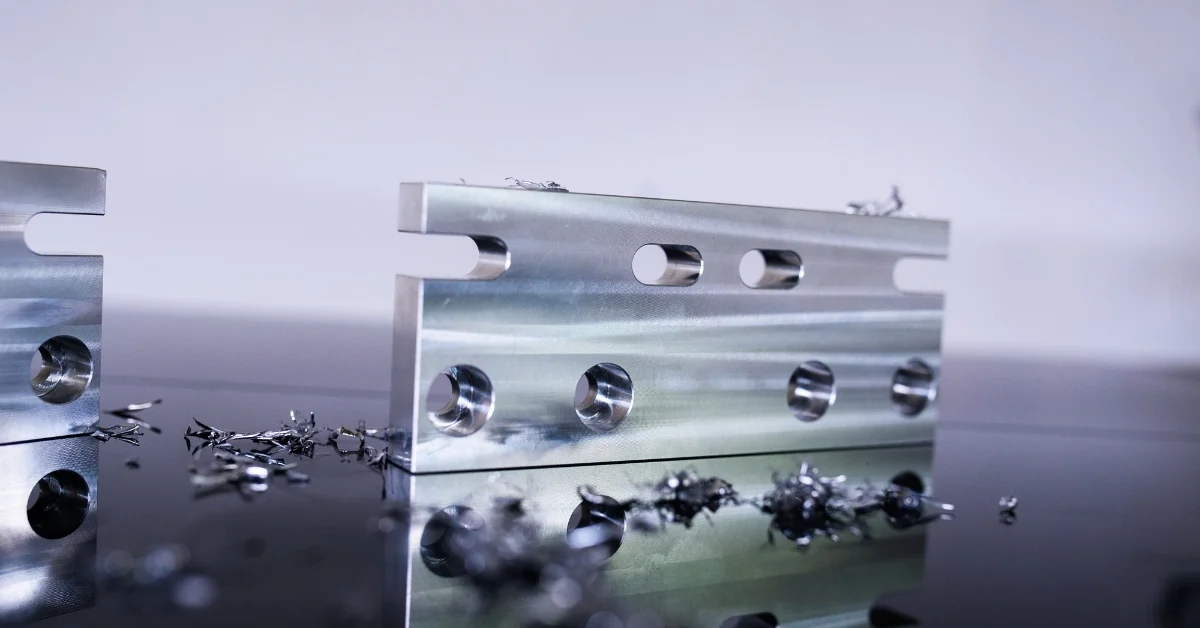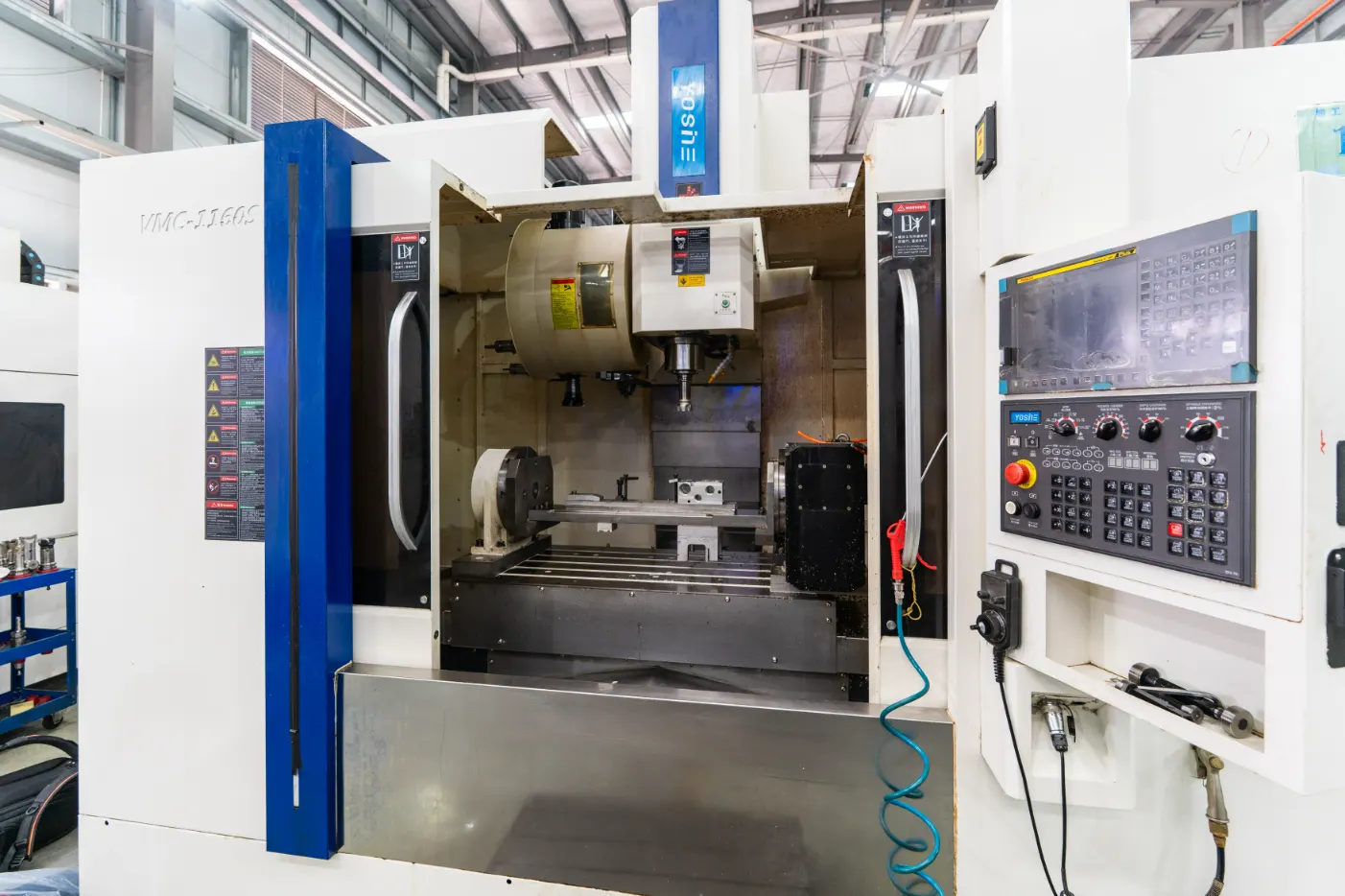Your Ultimate Guide to CNC Machining Auto Parts
Discover why HDC is the premier CNC machining auto parts manufacturer. Learn about the types of car parts made with CNC, the materials used, quality control measures, and the pros and cons of CNC machining. This FAQ guide ensures you get the best-fit products for your automotive needs.
Types of Car Parts Can Make With CNC
- Oil Drain Plugs
- Billets Valve Covers
- Lug Nuts
- Bolts
- Bushings
- Valve Retainers
- Carburetor Housings and Cases
- Exhaust Parts
- Components of Fluid Systems
- And Many More!
 CNC machining auto parts encompasses the classical and traditional way of manufacturing. What that basically means is that there is a wide library of materials that are used in CNC machining in the automotive industry.
CNC machining auto parts encompasses the classical and traditional way of manufacturing. What that basically means is that there is a wide library of materials that are used in CNC machining in the automotive industry. Types of CNC Processing Used in CNC Auto Parts
The different CNC processing techniques play a vital function in the fabrication of accurate and intricate automotive components. CNC turning, milling, drilling, grinding routing laser cutting waterjet cutting wire EDM plasma cut engraving provide reliability and complexity of the production process by making cnc auto-parts. These tools cut a wide swath of automotive applications, including the production of cylindrical shafts and gears as well as interior components that require very high levels of precision in bearing and camshaft manufacture. The adaptability of CNC processes makes it easy for manufacturers to match the high standards and complications required in the automotive industry.
Materials Used in Automotive CNC Machining
All materials used for the traditional manufacturing or production of car or automotive parts are also known and common materials used for CNC machining.
To help you with it, here are the most common CNC machining materials used in the automotive industry:
Stainless Steel
Strong against corrosion, wear, distortion, and even intoxication – stainless steel is what many consider as their go-to material. It’s stainless, so it wouldn’t actually be ruined by oxidation, it’s also extremely flexible! However, the only thing that throws it off would be its low-strength factor, it’s not as durable and as tough as other alloys, but they can easily be sourced and machined!
Fiberglass
Made up of thousands of glass fibers woven to perfection, fiberglass is also another common material used in CNC machining automotive parts. If you think fiberglass is not that important, think again! The most commonly manufactured parts (in all industries) include pipes, rotors, tanks, housings, automotive and aerospace bodies, and many more!
Thermoplastics
Thermoplastics can easily be softened by heat, not to mention that most CNC machines utilize heat in the process. Compared to traditional low-grade wood and metals, thermoplastics are flexible, durable, and adaptable while maintaining style and fashion.
Carbon Steel
If you look at different materials in the machining sector, you’ll notice carbon steel to be at the top of the list, this is because of the fact that they’re easily machinable without degrading or deteriorating quality.
There are many different types of carbon steel, but the best and most common one used is carbon steel 1045.
Titanium
Titanium is one of the go-to materials if you are looking for strength and toughness partnered with abrasion and corrosion resistance. That being said, it’s a prominent material that’s used in the military and defense industry, as well as several industrial applications.
One drawback it has is its price – titanium is relatively more expensive than other alloys.
Aluminum
Probably the most used and most-sought-after, aluminum has been one of the best and most remarkable materials in the industry. Known for their property of being easily machined and worked on (even in large amounts), they also have excellent levels of electrical conductivity and strength-to-weight ratio.
They’re easy-to-find, and relatively cheap, resulting in them being one of the most used materials in the automotive sector.

Quality Control Measures for CNC Auto Parts
Quality control in CNC Auto Parts production is characterized by a number of important steps. It begins with material inspection, precision machining and tolerance checking to verify that the parts meet requirements. In addition, article first inspection and in-process controls keep uniformity while surface finish, assembly tests ensure quality. Quality assurance is also assisted by visual inspections, traceability and comprehensive documentation. Variances are monitored through statistical process control , and ISO certification is sought. Supplier audits and customer feedback help achieve continuous improvement, towards meeting or bettering the standards in automotive industry.
The Tolerances Achievable With CNC Auto Parts
CNC machining can achieve tight tolerances typically ranging from +/- 0.001 inches to +/- 0.005 inches (0.025mm to 0.127mm) for auto parts, depending on the complexity of the part, material, and specific machining capabilities of the equipment used.
Surface Finishes Can Be Applied to CNC Auto Parts
- Anodizing
- Painting
- Powder Coating
- Plating
- Polishing
- Passivation
- Bluing
- Brushing
- Shot Peening

Importance of Making Car Parts With a CNC Machine
In the automotive industry, CNC or computer numerically-engineered machines are of great use because of the speed, accuracy, and the quality of the parts and components that are built for car manufacturers.
In addition to that, the specification and customization you can get with CNC machines is outstanding, too!
That brings us to the next question, which is…
Compare Casted Auto Parts to CNC Auto Parts
Casted auto parts and CNC auto components are two distinct ways of manufacturing automotive products. Casted auto parts are manufactured by pouring molten material into a mould and they suit for simple to moderately complex forms like engine blocks as well transmission housings. They are highly cost-effective for large production runs because of low tooling costs but may need to be post-processed and have looser tolerances compared with CNC machining.
Alternatively, CNC auto parts are produced with the aid of high precision CNC machines that enable complicated and extremely complex part geometries. This technique is good for close tolerances and fine surface finishes, which are needed in high precision components such as engine valves or gears. Although cost-saving may be achieved through CNC machining for small to mid production runs, the tooling and setup costs will surpass those of casting in large volumes. The decision between the two approaches is based on the needs of a particular automotive component and its cost-effectiveness.
Considerations When Choosing CNC Machining Materials
There are several considerations in choosing the materials for the automotive parts you need. But the most common considerations (questions) would be
How would the part be used?
The consideration of usage is among the most important considerations you can have because it will dictate whether the component will last long or not. For instance, if you’re trying to look for a billet valve cover, you want to go with anodized aluminum because of its excellent thermal conductivity.
What is its weight?
Imagine a racecar having heavier-than-the-usual parts – wouldn’t that be a bummer? Weight is an important factor in the manufacturing of automotive parts. Don’t worry, though, there are low-density metals available that you can choose from!
What’s the budget?
Lastly, you need to be aware of the budget. You might be overspending on a component that doesn’t actually need to be that expensive. You want to maximize the costs for the material so that you can use it for better and more valuable purchases.
Brass vs. Aluminum Alloy Automotive Parts
Have you ever heard of a brass car component? It’s rare, but it’s actually a thing. As a matter of fact, brass automotive components have been the standard before – but that was until the era of aluminum took over.
The most common automotive components that make use of brass are tanks, tubes, radiator cores, and valve parts.
Today, many manufacturers consider aluminum and stainless steel as staples, but there are still suppliers that treat brass as their key.
DID YOU KNOW: Brass parts and components are easily recyclable. It’s an environmentally-friendly and economical material you can take advantage of.
The Production Process of Premier CNC Machining Auto Parts

Different manufacturers and suppliers carry on the production or manufacturing process of auto parts via CNC machinery differently. However, the general method of how it’s done is as follows:
Step #1: Raw Material Loading
The first step is to identify the material that’s going to be used. Manufacturers have to decide from the beginning what they want to use. Whether it’s aluminum, stainless steel, brass, or even carbon steel, it will be loaded and brought out into the CNC machine for preparation.
Step #2: Work Coordinate Setting
Then, the next step would be to set the working coordinates of the station. This is usually run by a program – engineers and programmers would have to work together to set this up and prepare this.
NOTE: Most CNC machines have built-in control units – they’re usually done there.
Step #3: Tool Geometry Setting
Once finished, the tool that is to be used would be the next to be set and prepared. The overall geometry and alignments of the tool, as well as the movement will be programmed.
Step #4: Program Running (Rough Cutting)
When everything is set and prepared, then the next thing to be done would be to run the machine – run the program! The time of finish will depend on the quality, quantity, and the cut type you’re looking for.
This will be done to all materials that have been set and loaded to the machine until it’s finished.
Step #5: Finishing Cut (Smoothing or Polishing)
After going through the machine, it will be finished. Usually, the finishing procedure would be done manually in the presence of a quality inspector and analyst. This is simply because of the fact that the machine might have errors in it, causing it to produce products that are only about 97% accurate.
Step #6: Quality Checks and Assessments
The last step is for analysts and assessors to inspect the CNC machined automotive parts. They’ll check everything from A to Z and to make sure that everything is within the required measurements and estimations.
Advantages of CNC Machining Auto Parts
- Faster Production Speed/Rate
- Automatically processed once programed
- Fast production
- High level of accuracy
- A particular part can be produced numerous times
- Precision and Accuracy
- Versatile and Flexible Products
- Adaptable Customization
- Excellent Repeatability
- Automation

Disadvantages of CNC Machining Auto Parts
- Higher Costs and Expenses
- Requires the Operator to be Trained
- Higher Maintenance Costs
- High Installation Costs
Types of Car Parts Can Be Machined
- Engines
- Lightings
- Carburetor casing
- Bushing
- Valve retainers
- Exhaust parts
- Suspension components
- Fluid system
Choose a Reliable CNC Machining Auto Parts Supplier
If all you’re looking for is great-quality, premier CNC machined auto parts, then it’s just right to work with us here at HDC Manufacturing. For 13+ years, we have developed and streamlined all our manufacturing work, including the high extent of our computer numerically-controlled (CNC) machines.
All of our manufactured produce have been imbued with the most precise, most accurate, and most reliable materials to ensure that they wouldn’t fail even after years of usage.
Our expertise includes engine block guards, chrome oil dipsticks, aluminum wheel lug nuts, oil drain plugs, valve covers, and many more!
Not sure of the specific car parts you need? Work with us and we will examine your products and assemblies for you! We have a team of highly seasoned and experienced engineers who are always ready to provide the necessary assistance you’ll need for the assembly of your projects!
Reach out to us and we’ll be more than happy to help you with the all the CNC machining car parts you need!
Steps You Should Take When Ordering Custom CNC Auto Parts
- Define Requirements: You should clearly state details about your part such as its drawings, materials used in it, quantity required and tolerances with surface finish.
- Choose a Supplier: Select a reliable CNC machining supplier after research.
- Request a Quote: Obtain a detailed estimate from the supplier, which includes all costs and lead times.
- Review and Clarify: Closely study the quote, ask questions and finalize order details.
- Place the Order: Formalize the arrangement by an agreement or purchase order in writing.
- Monitor Progress: Communicate with the supplier; monitor production and delivery dates.
- Quality Assurance: Make quality control checks during the manufacturing process, including inspections and tests.
- Receive and Inspect: Inspect the received components carefully and deal with any problems as soon as possible.
- Payment: Make payments according to the agreement.
- Feedback and Future Orders: Respond to create a lasting relationship and direct future orders.
Conclusion
In summary, HDC Manufacturing is a trusted pioneer in the CNC machining auto parts industry. The FAQ guide addresses such important aspects of CNC machining as the types of car parts manufactured, used materials, quality control principles, typical tolerances and benefits vs. drawbacks that make use of this technology. The high level of skills and dedication to the precision HDC Manufacturing possesses is what makes them a leader in manufacturing custom CNC auto parts.
Resources:


